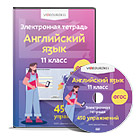Electronic waste
1.Найдите в правой колонке русские эквиваленты английских слов и словосочетаний:
1. electronic goods a.приборы,гаджеты
2.equipment b.заменять
3.appliances c.ядовитый,токсичный
4.replace d.почва
5.toxic e.уменьшать, сокращать
6. harm f.электронные товары
7. release g.пищевая цепочка
8. poisonous fumes h.доступный
9.chemicals i.химические вещества
10.food chain j.вред
11.soil k.оборудование
12. landfill l.поощрять, поддерживать
13. available m.ядовитые испарения
14. encourage n.выпускать
15.reduce o.свалка
2. Прочтите текст и выполните следующие за ним упражнения:
There’s no doubt about it, electronic and electric goods make our lives much easier, but unfortunately there’s a price to pay for this! As technology advances at a faster pace each year, appliances and gadgets quickly become outdated and people throw more of them out. Also, electronic equipment has become more available and cheaper, so people often replace their old computers and TVs instead of getting them repaired. This creates tons of electronic waste, or ‘e-waste’. In the USA alone people get rid of about 250 million computers a year and only 10% are recycled!
So what’s the big deal? Well, unfortunately e-waste contains over a thousand chemicals, many of which are very toxic. Most e-waste currently ends up in landfills where chemicals and heavy metals such as lead, cadmium, chromium and mercury gradually leak into the soil which can eventually cause great harm to people. Some e-waste is burnt, but this releases toxic gases into the air. When e-waste is simply dumped in landfills it can emit poisonous fumes. It can also leak dangerous chemicals into the soil which can affect the food chain.
Fortunately, all is not lost! Manufacturers are starting to encourage more recycling and reduce the number of toxic chemicals they use. Also, many countries have signed treaties to stop the exporting of e-waste to other countries. But there are things you can do to help solve this problem, too. Just remember the 3Rs -REDUCE, REUSE, RECYCLE!
Ответьте на вопросы:
1. What is the electronic waste?
2. What are the Biggest Electronic Waste (E-Waste) Problems?
3. How do e-waste problems affect the environment?
4. Are the computer and telephone you have now, the first you have ever owned?
E-Waste/E-Cycling facts to think about
1. Every year, over 50 million tons of electronic waste is created.
2. Each year, globally, around 1 billion cell phones and 300 million computers are put into production.
3. In the U.S. alone, over 140 million cell phones are thrown into landfills every year. If all the cell phones were recycled, it would save enough energy to power 25,000 households for one year.
4. The United States is No. 1 worldwide in terms of e-waste produced annually. Americans throw away around 9.4 million tons of electronics every year.
5. Recycling one million laptops saves the energy equivalent to the electricity used by more than 3,500 US homes in a year.
6. Only 12.5% of e-waste is recycled.
7. Annually, Americans throw out phones containing over $60 million in gold and/or silver.
8.E-waste represents 2% of America’s trash in landfills, but it equals 70% of overall toxic waste.
9.A study identified that producing a computer along with its monitor takes at least 1.5 tons of water, 48 lbs of chemicals and 530 lbs of fossil fuels.
10. The amount of global e-waste is expected to grow by 8 percent per year. Roughly 80 percent of electronic waste generated in the U.S. is exported to Asia, a trade flow that is a source of considerable controversy.
Consumer electronics industry leaders created the E-Cycling Leadership Initiative as a way to commit to the e-cycling movement. This is what the E-Cycling Leadership is doing:
Apple:
– Creating compact, efficient products that require less material to produce
– They use arsenic-free glass and recyclable high-grade aluminum
– All e-waste is processed in the region it was collected (nothing is shipped overseas for recycling or disposal)
– Recycling programs have been instituted in cities and on college campuses in 95 percent of the countries where Apple products are sold. This alone has diverted more than 130.2 million pounds of equipment from landfills since 1994
– Apple operates a number of free Takeback and recycling programs
HP:
– HP has been recycling computer electronics since 1987
– They currently operate recycling services in 56 countries and territories worldwide
– They launched a U.S. buyback program in 2009
– In 2009 they recycled more than 200 million pounds of hardware globally
LG:
– LG allows consumers to drop off unwanted electronics at designated E-Cycling Centers
– LG has recycled more than 7 million pounds since 2009
Samsung :
– Samsung Recycling Direct provides drop-off locations in all 50 states
– Samsung Recycling Direct was founded on the principles of the protection of people, the environment and developing countries through responsible management of materials
– Samsung holds its recyclers accountable for environmentally responsible recycling in the way of no landfill, incineration, or export of hazardous electronic waste to developing countries

















